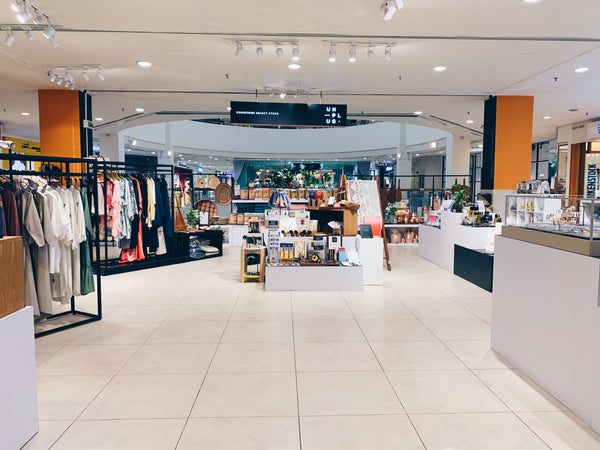Why Are Sustainable Products More Expensive And 5 Ways You Can Save
If you’ve been interested in living more sustainably, then you’re probably wondering why are sustainable products more expensive? It’s no secret that living more sustainably comes with a higher price tag, but we’re here to tell you that the benefits far outweigh the costs, and it’s not a higher price that you’re paying, but a fair price.
Understanding what makes sustainable products can help explain the higher price tag. If you’re reading this, you probably want the people making the products you buy to be paid a fair wage, right? And for them to use materials that are kind to the environment?
These are some reasons why sustainable products are more expensive, but it’s worth it in the long run. Come along with us as we walk you through it; plus, we have 5 ways you can make some savings as you move toward more sustainable living.

Why Are Sustainable Products More Expensive And 5 Ways You Can Save
-
Demand
-
Raw Materials
-
Toxins
-
Wages
-
Certifications
-
Business Practices And Price Transparency
-
Eco Promotion
-
5 ways you can save

Demand
If you’re looking for ways to be more sustainable, the first thing to do is to support the companies making these products by buying their products.
A survey in 2021 found that sustainability is becoming increasingly important when people make purchases. They also found that the last three generations have shifted towards making more sustainable choices.
Although society is shifting towards living more sustainably, unfortunately, when you look at the shelves of your local store, there is generally a lack of eco-friendly products for you to choose from.
In fact, in the 2022 UNPLUG Sustainability Survey Report, we found that 93% of the UNPLUG community are consciously choosing to adopt a more sustainable way of living. However, 87% of them mentioned product availability as one of the top two challenges when maintaining a sustainable lifestyle.
Without products to choose from in an easily accessible way, demand decreases, meaning it costs more to produce these products because fewer people buy them. Ultimately, even sustainable businesses need to turn a profit to operate and pay their people.
Mass-manufactured items are high in demand, meaning that the more that’s produced, the less it costs. For sustainable products made on a small scale because they’re not in high demand, companies can’t lower their prices and must charge more for them.

Photo source: Unsplash
Raw Materials
Products with a lower environmental impact tend to be more expensive because the raw materials are harder to come by. For example, hemp is a great eco-friendly material that requires little water to grow and replenishes soil nutrients to help improve soil health.
Another factor that impacts demand is that time. Natural raw materials take time and effort, working in the natural flow of the environment, to be produced. This slows things down which means access can be limited.
Why are sustainable products more expensive? Well using raw materials means it costs more to produce. Check the labels of the sustainable products you use. Often, a lot of time and effort has gone into sourcing the raw materials used to ensure that the effect is long-lasting to avoid waste.

This 100% hemp shirt costs MYR 350 (USD 79) as compared to a cotton shirt at H&M which costs USD 24. Though the H&M shirt costs less, it doesn’t account for the workmanship and the fact that the hemp shirt will eventually be good for the environment when it’s done with. Not to mention that hemp is also extremely durable, UV resistant, hypoallergenic, and thermo regulating.
So ultimately, the hemp shirt is going to be a better investment because just one shirt will last you a lot longer than the cotton shirt. Hemp also biodegrades faster than organic cotton, and produces 250% more fiber than cotton and 600% more fiber than flax on the same land, and has the highest yield per acre of any natural fiber.
This makes it better for the environment in the long term. These are all considerations to make when you make a purchase because the choices you make now do have an impact on the environment in the long term.

Photo Source: The Independent
Toxins
When you go to your local supermarket, you’ve noticed that organic produce costs more than non-organic. This is because it costs more to use natural pest control methods when growing produce.
Using chemicals like preservatives and pesticides makes it easier to mass-produce fruit and vegetables without worrying about them being attacked by bugs. While there are health and environmental risks to using these chemicals, these are businesses, and the commercial benefits and profits far outweigh these risks.
When growing products without using tharmful toxins, it costs more to find materials that aren’t harmful for use but do what it’s meant to. As mentioned earlier, these materials also take longer to produce because of the natural cycle which means there’s a cap to what is produced.
Think about your home cleaning products. The general sentiment is that eco-friendly cleaning products are expensive and don’t work as well as your regular dirt-busting products.
A lot of time, research, and resources go into finding something that can put these cleaning products on par with their non-eco-friendly counterparts. This explains why these sustainable products are more expensive.

Photo Source: Instagram @nysakapas
Wages
As mentioned, these sustainable businesses are businesses, and labor is one of the most significant expenses to a business. When you’re assessing why are sustainable products more expensive, think about how much the people making the products you buy are getting paid.
It’s been in the media for years that many big brands have been exposed for their poor employment practices. Think about child sweatshops to paying people less than $1 a day. Sure, the argument is that $1 is a lot of money in many countries, but this doesn’t mean that this is a fair wage for the work done.
An example of a brand that focuses on paying a fair wage for the work is Muni, where 41.5% of the cost of a men’s shirt goes to the artisan themselves. This is at the core of this company’s mission and they make sure that this translates to the cost of their products.
The shirts are naturally dyed and this requires knowledge, skills, time, and effort. It can take up to 5 days to make one shirt as compared to a half-day production time of a commercial operation using chemical dyes.
What you’re left with is a product that’s going to last you a long time, and is a labour of love. It adds more meaning to the purchases you make, which makes it more valuable.
When people are paid a living wage, they can afford their basic needs like food and shelter but can also consider putting some money aside to support their long-term futures.
With this additional money, they can also support their local communities, which helps these communities grow. It’s a cycle of goodness that’s good for people and the communities they live in.

Photo Source: Facebook @indosole
Certifications
Products that require rigorous testing and inspection do tend to cost more. This explains why are fair trade products more expensive because certifications like organic, fairtrade, b-corp, and leap bunny are designed to ensure that the products are sustainable and ethical.

Photo Source: Instagram @eartheir
These certifications require extra time, money, and resources. Certifications also have fees, which means sustainable businesses have to pay money to advertise that they have these certifications in the first place.
It’s like a membership fee to be a sustainable business, which provides consumers with peace of mind knowing that their purchases are sustainable and ethical.
In Malaysia, we have places like The Green Factory, which supports manufacturing of wood products using a circular approach. Brands such as Dapo, produce their wood products using PEFC certified wood and sustainable processes from selecting the material to making sure there’s a plan for the offcuts.
Not technically a certification, but being affiliated with The Green Factory means that thought is being put into the sustainable products of everything made.

Photo Source: Instagram @thegreenfactorykl
Business Practices And Price Transparency
When businesses decide on how to become a more sustainable business, they most likely have to change their business practices to ones that are more sustainable and ethical. This is mainly for existing businesses pivoting toward a more sustainable world.
Companies adopt eco-friendly business practices like installing solar panels, using energy-efficient appliances, allocating staff time to environmental causes, and trimming their packaging.
Without adopting these practices, sustainable businesses could be seen as hypocritical to the public eye. Some of the sustainable brands you support may detail what goes into their production and pricing, for example, Seeker x Retriever.
Many new businesses are scrutinised over their use of packaging when they release a product. If a company says, they focus on sustainability, but their products come in multiple boxes and plastic that isn’t recyclable - they’d be seen as hypocritical.
They will receive a lot of criticism which could lead to them not making any sales. Eco-friendly consumers want the businesses they support to “walk the talk.” These businesses also take the time to explain their practices to build trust with their consumers. All of this costs money which again transfers over to the customer.

Topiku's collaboration with Sungai Watch river clean-up.
Photo Source: Instagram @geoffweis
Eco Promotion
As we mentioned above, business practices must change if a business chooses to become more sustainable and ethical. When marketing their products, these businesses have to think carefully about how they capture the consumer eye without going against the eco-practices that they live by.
It’s vital to avoid greenwashing - which is the practice of saying that a company adopts environmentally friendly practices, but when you dig deeper, they don’t.
Eco promotion starts from building the company brand to ensuring that the products go through a circular movement where the thought is put into the sustainable products, right from sourcing materials to what to do with the empties once the product finishes.
This contributes to why sustainable products are more expensive as this time and effort pass over to the consumer.
5 Ways You Can Save

Skincare refillery by Re{me}dy
Photo Source: Instagram @remedy.kl
1. Reduce Repeat Purchases
Generally speaking, sustainable products have a higher up-front cost, but these costs go down over time. Think of purchasing a reusable silicone bag that you can do away with disposable plastic zip bags but refill with food and even small portable items such as make-up, accessories and toiletries. Make it multi-purpose!
Another example in Malaysia is Remedy who have a refillery as part of their mission for sustainability. They have amazing natural hair and body care products that you can come back with your empty bottles and purchase refills. One can find the full refillery at UNPLUG store outlet.
When you’re wondering why use sustainable products, consider this refill and multipurpose perspective because it does make a difference in the long term.

2. Go Beyond Your Regular Grocery Store
If you’ve noticed that your local grocery store doesn’t have a wide range of sustainable products, try looking for stores that do. UNPLUG is one of them, and every product is curated with the people and the planet in mind.
It’s also important to support local sustainable businesses in your community to help grow this sector in your community. It’s important to us that you understand why organic products are more expensive, which is why we break it down for you, so you can make conscious choices.
Even if we don’t have the products you’re looking for ourselves, for example, fruit and vegetables, we may be able to point you in the direction of a business that does. A little research goes a long way, and once you find your go-to’s, you’ll never return.

Photo Source: Instagram @remedy.kl
3. Check For A Post-Purchase Service
Have you ever wondered what happens to your products once you use them? Or if the company you support has a repair service? Many sustainable businesses have thought about this to ensure that their business practices are circular.
For example, coming back to the refillable bottle, check that it’s recyclable, so if you decide to change it, it’s still going to not impact the environment.
Brands like Apple have a Genius Bar support, where you can get your battery or screen replaced for a fraction of what you’d pay for a new device. This helps with overconsumption and reducing this contributes to living more sustainably.
Some of your beauty companies may also offer a service where you can send them your empties and reuse them instead of having to manufacture them again. This also extends the lifespan of the containers and reduces waste.
These post-purchase services are excellent for sustainability so look out for these when you make your next sustainable purchase. If you’re not sure, ask them! If they don’t do it currently, if they’re a sustainable business, it could be something that they add to their roadmap in the future.

4. Look For Quality Over Quantity
If you’re constantly thinking about why sustainable clothing is expensive, look for products that are durable and long-lasting. For example, the hemp shirt we mentioned earlier.
Buying quality products will mean that you won’t need to replace it in a month. The longer things last, the less you’ll need to consume, and you’ll save money in the process. Quality trumps quantity every time.
Another example of quality products is something that is handmade. Natural dyed batik is a reflection of the artisan’s vision and values and lasts generations. Each piece is unique and tells the story of the artisan themselves as they work with their hands, and learn to be patient and in tune with nature.
A brand that focuses on this is Nysakapas where a significant amount of the product costs go to their four young artisans (the “Soldiers of Art”) who spent the last 3-4 years learning the craft of batik-making, with the view that they’ll transfer their knowledge to future generations.
This is why buying quality handmade products isare so impactful as you’re not only getting a long-lasting product, you’re also supporting the artisan’s dreams, way of life, and future generations.

Photo Source: Lexngo
5. Get The Family Involved
We discussed demand earlier, and the best way to help save more money for sustainable products is to increase demand. The more people that buy the products, the less it’ll cost for these businesses to produce.
Also, getting the family involved in your sustainable practices helps the environment as a whole, and there are many ways to how to be more sustainable at home.
For example, buying bamboo toothbrushes for everyone or using refillable cleaning products. All of these contribute to more sustainable living and will help grow sustainable businesses in the future.
Why Is Sustainable Development Expensive?
As we’ve been discussing why are sustainable products more expensive, it’s all because of a lack of demand, quality raw materials, or fair and equitable business practices. Once we can improve these, the cost of the products will come down, making it easier for everyone in society to access.

















